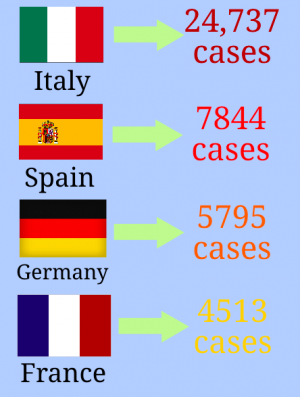Metro-North ridership dropping, displacing student commuters
Two conductors watch as a passenger steps off the train at the Westport station. The Metro-North line ridership statistics had slowly been stabilizing since the start of pandemic in March but recently plummeted. The decrease in ticket sales have created more seat vacancies than usual.
On a typical Saturday at 11 a.m., you could find Jane Krauss ’21 getting off her train at Grand Central Station. From there, she would make her way to 23rd street, where the School of Visual Arts was located. Krauss used to take classes the whole semester in oil painting. However, this year Krauss no longer feels comfortable taking multiple trains and subways in order to get to class. Now, Krauss finds that she and many other Westporters have lost connections to the city that they relied on.
“There is a lot of risk to exposure because I’d have to take so many forms of transportation to get there,” Krauss said.
In fact, the day-by-day ridership statistics provided by the Metropolitan Transportation Authority (MTA) show significant decreases in the percent of riders compared to 2019. In the past few weeks, numbers have dropped and reached record minimums.
In the last seven days of November, there was a daily average of -80.57% of people taking the Metro North Line, with the lowest number of people on Friday, Nov. 27, -96%. These numbers are a contrast to earlier months where ridership had been trending upwards and stabilizing ever since the start of the pandemic.
After hearing about these statistics, Diana Hoffman ’21, a former student at the Arts Students League in the city, emphasized her decision to opt-out of classes this year.
“People like me who would go to the city for activities or just a day trip are no longer willing to take the risk of catching Covid,” Hoffman said. “I’m definitely less inclined to take the train when I hear about the dangers of commuting into the city and the recent decline in the number of people taking the train.”
The MTA has continually issued statements ensuring the safety of public transportation if everyone abides by the rules. Currently, they are requiring riders to wear masks while aboard and practice disinfecting on a regular basis.
“Riders who refuse to wear a mask could get a $50 fine,” the MTA website states.
Furthermore, to try to increase public trust in the safety of transportation, the MTA issued videos and Instagram posts on the daily depicting staff sanitizing trains and subways.
For a town that many live in due to accessibility into the city, this comes as bad news. Krauss and Hoffman are just two of many Staples students who either personally traveled into the city on a regular basis or have parents employed in the city.
Furthermore, the decrease in sales potentially poses risks to the thousands employed on the Metro-North line alone.
However, for some commuters, these drops in crowds are a welcome change as many commuters reported multiple hour commutes in a normal year. In an interview with the Hartford Courant, Gov. Ned Lamont spoke personally about his own decreased use of trains since the start of the pandemic.
“My instinct is you’re going to find a lot less back-and-forth between New York City as people realize telecommuting is working pretty well,” Lamont said. “And I don’t have to spend two and a half hours a day getting to and from.”






















































